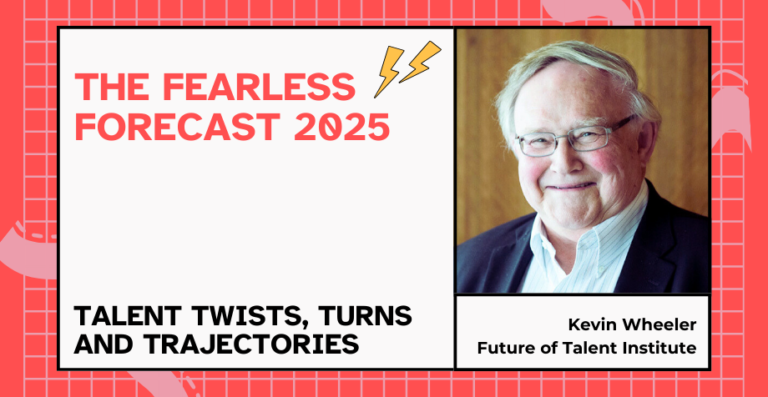People Analytics has experienced a meteoric rise in recent years, and for good reason. By using data and analytics, leaders can gain insights into their workforce that would be impossible to see otherwise. This information can be used to make better decisions about everything from hiring and onboarding to performance management and retention.
But data-driven People Experience (PEx) isn’t just about making better decisions. It’s also about creating a more compelling employee experience. That’s why it’s so important for PEx leaders to champion the use of data and analytics, and cultivate an environment where employees feel secure sharing their data. Leaders can empower data-driven decision-making by inviting PEx practitioners to use data and analytics to explore three common scenarios: Reconnaissance, Business Case Development, and Measuring Impact.
1. Reconnaissance
“Time spent in reconnaissance is seldom wasted.” This quote from German Field Marshal Erwin Rommel is a reminder that gathering information is essential to success. Rommel was a master of reconnaissance, and he believed that it was essential to understand the enemy and the terrain before launching an attack. He often conducted reconnaissance missions personally to ensure that his intelligence was current, accurate, and understandable in context.
Similarly, any new organisational challenge experienced by PEx practitioners should be approached through an accurate understanding of the context – enter data! Reconnaissance is the act of seeking out new or existing data and information on a topic. The very act of data and information gathering offers considerable value by enabling us to question the hypotheses that have guided us to that point, confirming or refuting existing assumptions and knowledge, and identifying possible courses of action for future activities.
The act of Reconnaissance can encapsulate both intra-company and external research, data gathering and exploratory analyses, and more sophisticated forms of analysis where data and skills prevail. It is an opportunity to establish the evidence base that will inform and drive future action.
2. Business Case Development
If you’re asking people to change their behaviour, you better provide a compelling reason why! In the face of challenging economic conditions, PEx functions will be competing for scarce resources. That’s why it’s so important to clearly articulate a considered approach to expenditure. By doing so, they can attract confident investment in initiatives and help their organisations succeed.
A business case is a document that shows senior leaders why they should invest in your initiative. As a natural extension of the Reconnaissance performed, it’s a chance to demonstrate that you’ve thoroughly considered the challenge, identified one or more evidence-backed solutions, and can execute to realise desired outcomes.
The business case should include the following sections:
- Problem: What is the problem that you’re trying to solve?
- Solution: What is your proposed solution?
- Costs: How much will it cost to implement and maintain your solution?
- Benefits: What are the benefits of your solution?
- Roadmap/Timeline: When will you implement your solution?
- Impact: What impact will your solution have on the organization?
By writing a compelling business case, you can show senior leaders that you’re serious about improving the colleague experience in your organisation. And most importantly, you can give them the confidence to invest in your initiative.
3. Measuring Impact
You’ve introduced one or more new pilot interventions, be it a referral programme, training content, compensation change, ticket-based resolution system, or even a new People Analytics platform. Congratulations! But the hard work doesn’t stop there. We need to determine whether our efforts have had an impact.
For PEx functions to make sound data-driven decisions, they need to be able to measure the impact of their actions (action without accountability equals anarchy!). Measuring Impact can be done through the analysis of data. People Analytics can help organisations identify whether initiatives are having the desired impact; whether adjustments to initiatives – even ceasing them to preserve resources – are required, what ROI has been generated from an initiative, and ideally, which initiative is the best among several options (tip: ideally consider multiple interventions in parallel to determine the most effective – don’t just back one option in your context).
Measuring Impact closes the virtuous data cycle of Reconnaissance to Business Case, providing a detailed understanding of the impact of action(s) taken. However, it is more than just an opportunity to satisfy the curious, it also represents an opportunity for PEx practitioners to build greater credibility among their counterparts within the business, thereby driving repeatable business!
Measuring the impact of your work can help you achieve several goals.
- Take your MVP to production: If you’ve created a minimum viable product (MVP) to test a new idea, measuring its impact can help you determine whether it’s worth investing in further development. If the MVP is successful, you can move it to production and scale it up.
- Publicise your success: If your work is having a positive impact, you can share your results with others. This can help you build credibility and attract support for your future initiatives.
- Predict future benefits: By measuring the impact of your work, you can get a better idea of the benefits you can expect in the future. This can help you make informed decisions about how to allocate resources and prioritise your work.
- Demonstrate your value: At your next performance appraisal, you can use the results of your impact measurement to demonstrate your value to the organization. This can help you secure a raise, a promotion, or other forms of recognition.
So don’t wait! Start measuring the impact of your work today. The benefits are worth it.
Conclusion
Data-driven PEx is a powerful tool that can be used to improve the employee experience and drive better business results. By using data and analytics, PEx leaders can make better decisions, identify areas for improvement, and track the impact of their interventions.
There are three key scenarios in which data and analytics can be used by PEx practitioners:
- Reconnaissance: This involves gathering information about a problem or opportunity. By understanding the context, PEx leaders can identify the root cause of the problem and develop potential solutions.
- Business case development: This involves articulating the value of a proposed solution. By identifying the costs and benefits of a solution, PEx leaders can build a compelling case for investment.
- Measuring impact: This involves evaluating the effectiveness of a solution. By collecting data on the outcomes of a solution, PEx leaders can track the impact of their interventions and make necessary adjustments.
The active use of data and analytics in PEx can help to create a more data-driven culture within the organization. This can lead to better decision-making, improved employee engagement, and increased productivity. The future of PEx is data-driven. PEx leaders who embrace this trend will be well-positioned to succeed in the years to come.
This article was originally published on the ADAM D MCKINNON blog and has been re-published here with permission.








